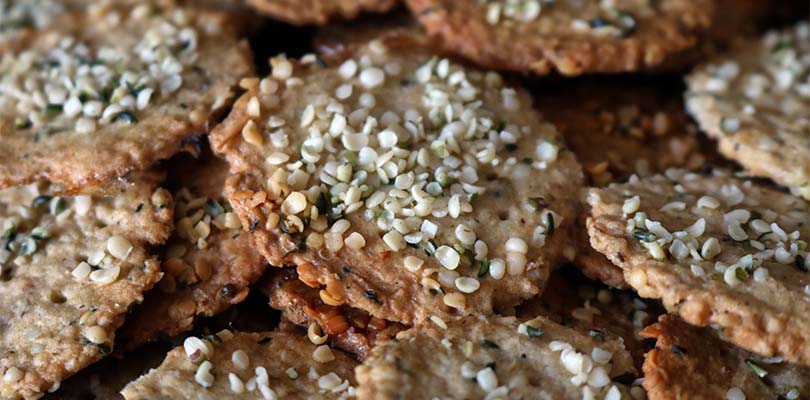Does Gluten-Free Equal Symptom-Free?
Each year, over 350 million people suffer from rheumatoid arthritis (RA) and this is just one of the forms that arthritis can take. This crippling joint condition has a huge impact on hundreds of millions of people of all ages across the globe, not just older people. There are different environmental factors that can affect arthritis symptoms. One of them is your diet. Here we explore a gluten-free diet for arthritis.
What Are the Common Arthritis Symptoms?
Arthritis causes pain, swelling and stiffness in joints. The hands, wrists, or even larger joints are affected. It can even cause other symptoms like fever, exhaustion, or the development of rheumatoid nodules.
Arthritis Management and Gluten
Many arthritis patients are desperate for anything that can help them manage their symptoms. There is no cure for arthritis and it often gets worse over time. Patients are often willing to try whatever method might make them feel better.
You may have heard that gluten can cause inflammation. So, you may be wondering whether you should eat a gluten-free diet to help with arthritis. This article has all the information you need to know on how gluten can affect arthritis, as well as some suggestions for gluten-free foods to help with your arthritis symptoms.
How Can Gluten Affect People With Arthritis?
The link between gluten and arthritis is not entirely clear. However, many people with celiac disease (a severe form of gluten intolerance that affects 1 in 100 people) experience inflammation when they eat gluten. This can make arthritis symptoms worse. This is partially because celiac disease is an autoimmune condition.
Additionally, arthritis has been found to be more common in patients with celiac disease. Again, this is thought to be because both are autoimmune conditions. However, the reverse of this is not true; patients with arthritis are not more likely to have celiac disease.
The research is not clear on how much gluten can impact arthritis symptoms in people without celiac disease. This is particularly true for arthritis types that are not considered autoimmune disorders, like osteoarthritis. The bottom line is that it can vary person to person. Some people experience gluten sensitivity in their digestion even if they do not have a celiac diagnosis. People can experience worsening arthritis symptoms to varying degrees from gluten. It depends on the person.
Can a Gluten-Free Diet Help People With Arthritis?
A gluten-free diet is usually not necessary for patients with arthritis, but it may help. This is especially true if you also have celiac disease and should avoid gluten anyway. All in all, it may be worth trying. The worst that can happen is that it does not help your symptoms. But if it does, you will be glad for it.
What Are Some Gluten-Free Foods That Are Good for Arthritis?
The foods that are best for arthritis symptoms are anti-inflammatory foods. The good news is that many of the usual recommended anti-inflammatory foods for arthritis are gluten free anyway.
Fruits and Vegetables
These are important to eat in any healthy diet, but they are especially a staple in gluten-free diets. They contain huge amounts of potent antioxidants, vitamins and minerals. You should try to eat a variety of vegetables and about 7 to 10 servings a day.
Fatty Fish
Rich fish, like salmon, is packed full of omega 3 fatty acids. These are some of the “good" kinds of fat and are very good for inflammation. Plus, fish is a great source of protein to help keep your muscles in shape.
Nuts
Nuts are a lean source of protein, and also contain omega 3 fatty acids. These are all important minerals. So, they are really a superfood when it comes to arthritis.
Whole Grains
Whole grains are a much more efficient source of nutrients and are much more likely to be gluten free than products containing refined grains. Plus, they help lower levels of C-reactive protein, which is a marker of inflammation. Just make sure the grains you are eating are truly gluten free. Some examples of gluten-free whole grains include rice, oats and corn.
Gluten-heavy foods that you should avoid if you are eating gluten-free include most processed starches. These are pastas, breads and many starchy snacks. A lot of these foods are not the healthiest to begin with, so even if the gluten does not impact your arthritis, you may feel better giving some of these up.
In Conclusion
There may be a connection between gluten and arthritis for some people, but it is not a given. However, if you have tried many different treatments and lifestyle changes for your arthritis, it may be time to give gluten free a chance. It may help your arthritis, and even if it does not, it may change other areas of your health for the better.
As always, discuss any major dietary changes with your doctor. They know your health history better and can help you make sure whatever choice you make is a safe and healthy one.
